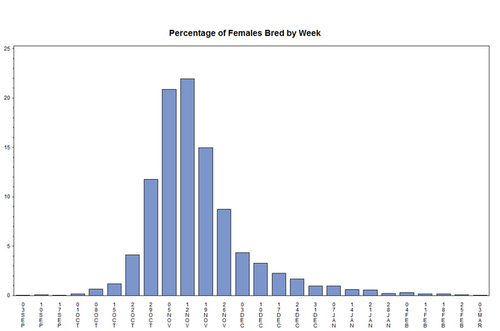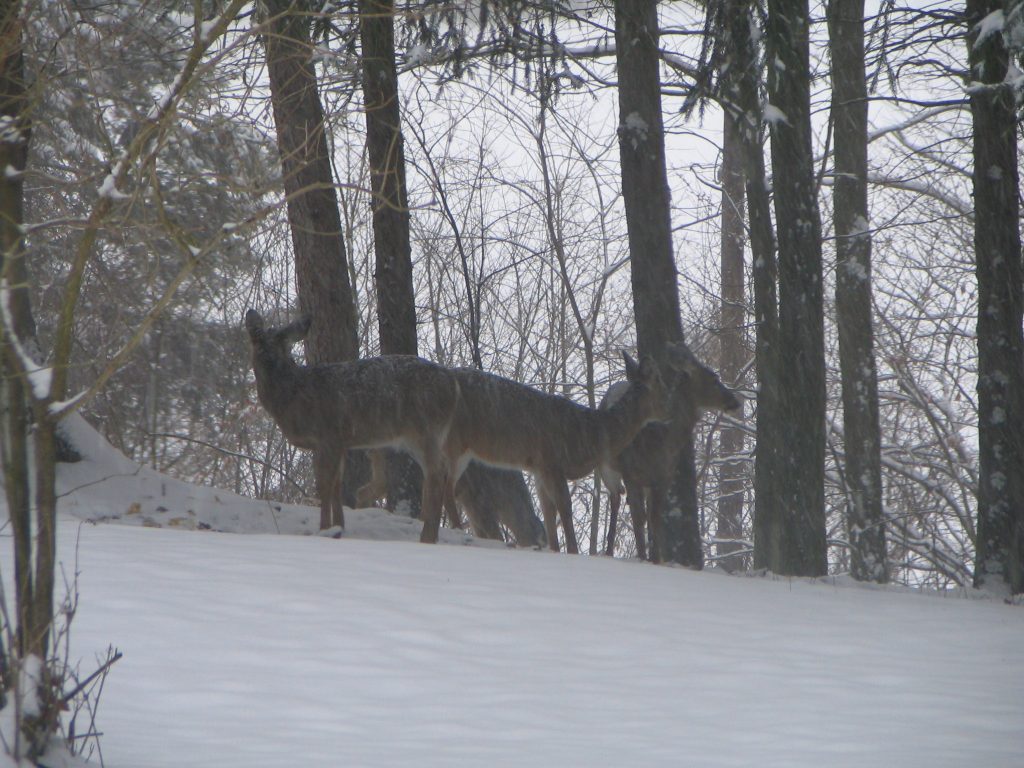An email I received February 22nd made me do a double take. I thought I had already answered it, but it was déjà vu. The email read:
“I am a rural mail carrier in Luzerne County. While on my route some days I will see 40+ deer. Today February 22, 2020 around 10:30am, I came across a group of doe (7), what stood out was a very small doe, but even more interesting was the doe/fawn was covered in spots and appeared to be something like a typical July fawn in size, shape and color. I have never seen anything like it. The doe and fawn even crossed the road in front of me. Unfortunately, when I went to take a picture my phone froze up on me. Have you heard anything like this or can explain??”
The reason this email took me off guard was I recently responded to this one:
“I’ll first say I love reading the deer-forest blog. Keep up the good work. [We love getting email that starts out like this!] I have a question about spotted fawns in October. I was hunting a local game lands here in Lancaster County on the first day of archery. I had a doe and a fawn come in and the fawn had spots. I watched them for about an hour and the fawn was still suckling from the mother. Is a fawn with spots unheard of this time of year? I figured most fawns have lost their spots by now. The fawn looked pretty young. Is it a “fluke” or an indicator of the herd in the area?”
These two observations may seem odd and out of place. You can really starting chasing your tail…and that’s exactly what’s going on there.
A few years ago [we’ve been at this blog thing a long time now], we published a couple of posts about the timing of female pregnancy. Since this is the result of the rut, it’s always a popular topic.
If you don’t want to go back and read them, the Cliff’s Notes version is that average conception dates for deer don’t change from year to year. And since fawns are the result of breeding dates 200 days later, it is a key part of these recent sightings.
Fifty percent of females are bred by 13 November. That means about half of all fawns are born by May 31st.That also means that half of females are bred after November 13.

Check out the tail of this graph. If a fawn is conceived on the 7th of January when it is born? July 26th. When is that fawn up and moving around? Late August. Is it still nursing in October? Yup, fawns are weaned at 10 weeks. Spots in winter? You betcha.
At the extreme, the Pennsylvania game Commission has documented fawns being conceived the 3rd of March. That fawn would not born until late September.
So seeing a fawn with spots in February is not impossible, although certainly improbable.
White-tailed deer (and many other species including people) have synchronous breeding to capitalize on favorable environmental conditions. After fawns are weaned, summer is at its height and food is plentiful giving them time to get as big as possible going into winter. Born too early and fawns are likely to succumb to springtime cold snaps; born too late and they are likely to die from winter weather.
As you move south in latitude different factors influence birth dates. If the climate is fairly constant (like South America), the window of time for fawn births can be very wide. However, if there are environmental factors that introduce seasonality in weather patterns, such as rainfall, you may see births timed to coincide with periods when forage is abundant (like Texas).
Even if their birth date is a little off, fawns can still make it. But some things still have to give. Growing a new coat is one of them. Because all their energy is needed to keep the system running, shedding those spots is not a priority. Their coat gets shaggier, but spots stay prominent and very visible.
In this century, we are likely to see changes in the timing of births as our climate warms. Winters are becoming milder giving early- and late-born fawns a higher chance of survival than in the past.
Day length will continue to drive the timing of breeding in white-tailed deer. It’s in their genes. But in ecology variety is the spice of life. Those females that get pregnant early or late are going to have a better chance for their genes to be passed on.
The ever-adaptable white-tailed deer.
-Duane Diefenbach
If you would like to receive email alerts of new blog posts, subscribe here.
And Follow us on Twitter @WTDresearch
